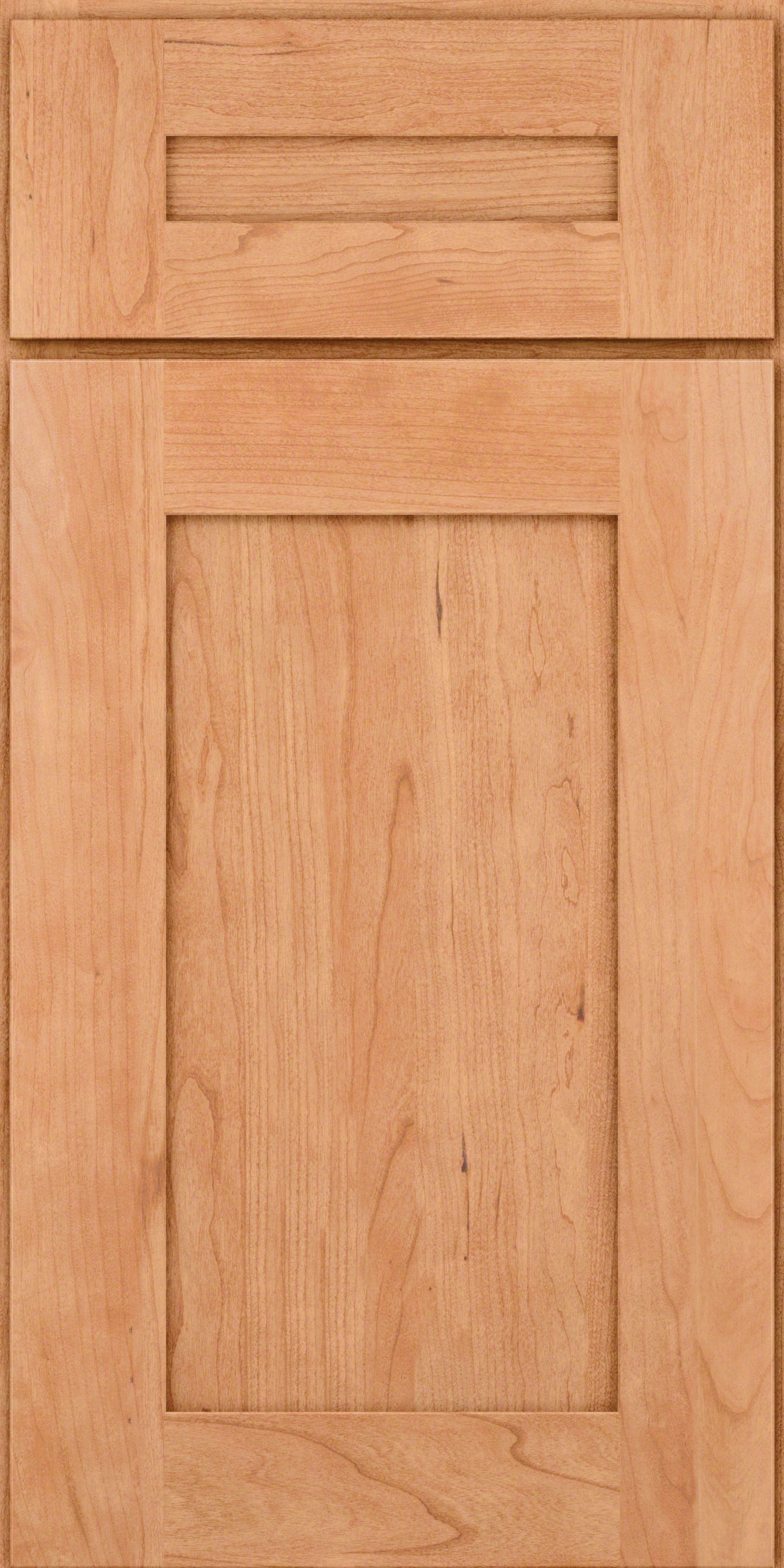There’s a lot to love about Cherry: It has a rich color that deepens with age, gorgeous woodgrain, and versatility that balances workability and strength. Over time, Cherry has earned a beloved place in homes, taking the form of everything from decorative bowls and chess sets to premium furniture and flooring. Plus, American Cherry trees take less time to mature than other hardwoods, making it a more sustainable and readily available option for cabinetry. Let’s dig into Cherry wood characteristics to see exactly what makes it so beautiful.

KraftMaid Shaker-style Cherry wood cabinet door in Natural finish
The smooth, straight-grain pattern of Cherry gives it a clean overall appearance that is well-suited for a range of looks, whether you’re going for something rustic, traditional, or chic.
Cherry has a generally uniform woodgrain, with occasional natural brown flecks, pin knots, and gum pockets or streaks that make each piece unique. Aside from these attractive imperfections, the character of Cherry grain is understated compared with the dramatic color variations, knots, and burls of a wood like Hickory, but it has a stunning natural luster and is well-suited for a variety of finish possibilities.
You can often identify Cherry wood by the reddish tone. The undertones of Cherry begin as light pink and darken over time in a process called “mellowing.” The final result of this breathtaking transformation is a rich, lustrous red tone.
Leaving Cherry in its natural state and appreciating its dramatic color journey is a wonderful – and popular – choice. But it’s not the only way to appreciate this wood.
American Cherry is considered a North American hardwood based on the distinction of it being a deciduous, flowering tree versus a needle-bearing softwood conifer.
When most people hear the term hardwood, they think of strength and durability – the literal hardness of the wood – not the biological type of tree. Look to the Janka Hardness Rating to measure how well a wood species can stand up to dings and dents of real life.
Here’s how Cherry compares to a few other common wood species you might find in and around your home. The higher the Janka rating number, the harder the wood:
| SPECIES | CLASSIFICATION | JANKA HARDNESS RATING |
|---|---|---|
| Red Mahogany | Hardwood | 2,697 |
| Teak | Hardwood | 2,330 |
| Hickory | Hardwood | 1,820 |
| Hard Maple | Hardwood | 1,450 |
| Red Oak | Hardwood | 1,290 |
| Cherry | Hardwood | 995 |
| Southern Yellow Pine | Softwood | 870 |
| Alder | Hardwood | 590 |
| Eastern White Pine | Softwood | 380 |
| Balsa | Hardwood | 70 |
Cherry has a Janka Hardness Rating of 995, so it offers good stability and durability – desirable characteristics when it comes to cabinetry. If you want something a little tougher, consider Maple in Ginger or Kaffe stain. The reddish undertones of these stains can mimic Cherry’s natural color, while the light, uniform woodgrain and smooth texture of Maple is similar to the finished appearance of Cherry.